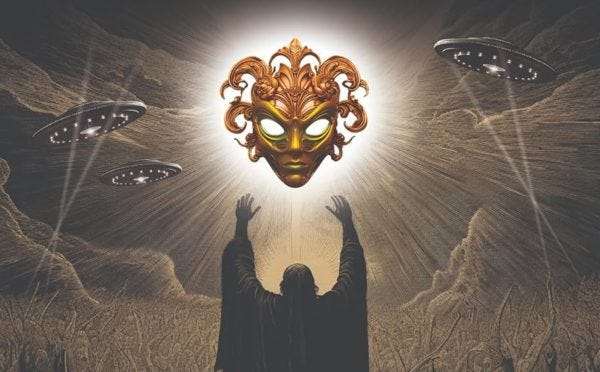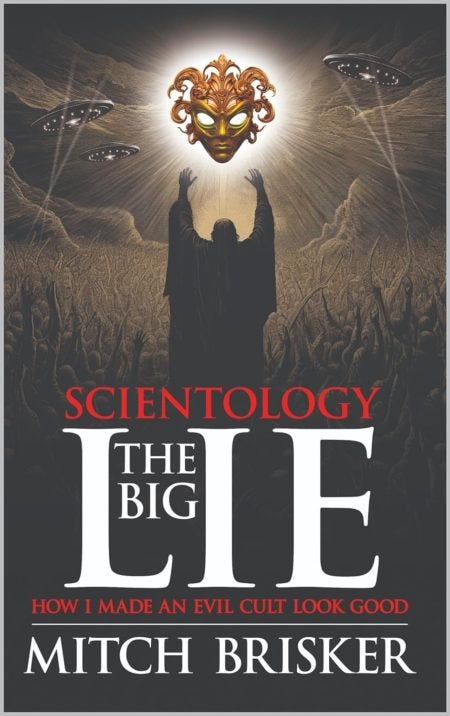Over the years, we’ve become very accustomed to Scientology’s “look.” You probably know what we’re referring to. The style and dressing of Scientology videos, the pacing and extravagance of Scientology events, and lavish attention to detail at Scientology facilities.
In some ways, it can be very impressive, but it’s also usually strained and over the top as it tends to reflect the ambitions of Scientology leader David Miscavige.
Often over the years, whether we were looking at Super Bowl ads, or new Ideal Org grand openings, we couldn’t help wondering who was helping Dave design and articulate Scientology’s vision.
Recently, we got an eye-opening answer to that question when a man named Mitch Brisker defected from the church and claimed to be responsible for Scientology’s look and feel.
Brisker first showed up at the YouTube channel of Janis Gillham Grady and Mark Fisher, but we’d been talking to him for quite a while before that, trying to help him as he attempted to re-adjust to life outside of Scientology.
We knew right away that he was a remarkable figure to have left Scientology, maybe the most notable person to leave since the exodus of executives like Mike Rinder and the Headleys in the mid-2000s.
And now, Brisker has published a book about his adventure as the man who gave Scientology its public appearance, and we can tell you that it’s a ride worth the price of admission.
But before he takes us into his church years in Scientology, The Big Lie: How I made an evil cult look good, available today, he first wants us to know about his upbringing as a kid in Hollywood who watched the Sixties happen on his front porch.
But if young Brisker found himself seeing Dylan at a club on Sunset Boulevard, and experienced being in the first class at the new Cal Arts as he pursued a life in film, his early plans were all subsumed in a serious heroin addiction.
A friend recommended Scientology, and Brisker found that not only were the Scientologists at the Celebrity Centre eager to help him with his habit, but they also seemed to genuinely care about him.
As a result, although he was becoming a skilled filmmaker, he also felt an obligation to Scientology, and one that would put him in one of the most unique positions in the organization.
Brisker gained access to some of the most sensitive locations and projects in Scientology working closely with its leader, David Miscavige, but Brisker’s position as film director and not a “Sea Org” member meant that he was still, on some level, separate from the dedicated troops he was tasked with turning into film crews.
This gave him access that few have been able to talk about, not only seeing Scientology’s projects put into action, but also being witness to how they were planned at the highest level.
Much of the time, Brisker explains, this meant that he was pulled into one impossible situation after another and was expected to “make it go right” on insane schedules. But the result was that familiar landmarks we associate with Scientology in Hollywood today, such as the L. Ron Hubbard Life Exhibition on Hollywood Boulevard, or CCHR’s museum, “Psychiatry, an Industry of Death” on Sunset, were projects that he brought to fruition.
And along the way, Brisker worked closely with David Miscavige and now brings us one of the most informative and nuanced portraits of the diminutive man who runs Scientology. Brisker portrays a man who was a ruthless micro-manager, as others have. But Brisker’s Miscavige could also be supportive, clever, and even fun to be around.
Eventually, though he had felt some obligation to Scientology for helping him with his addiction decades earlier, Mitch begins to wonder about his dedication to the organization and how it had affected his life and his career. But getting out is not so easy, as so many have found out.
We know from our own interactions with Mitch that starting over after 70 has been a tough task for him. But if this fascinating and well-written book is any indication, he’s making the most of his new life.
Want to help?
Please consider joining the Underground Bunker as a paid subscriber. Your $7 a month will go a long way to helping this news project stay independent, and you’ll get access to our special material for subscribers. Or, you can support the Underground Bunker with a Paypal contribution to bunkerfund@tonyortega.org, an account administered by the Bunker’s attorney, Scott Pilutik. And by request, this is our Venmo link, and for Zelle, please use (tonyo94 AT gmail).
Thank you for reading today’s story here at Substack. For the full picture of what’s happening today in the world of Scientology, please join the conversation at tonyortega.org, where we’ve been reporting daily on David Miscavige’s cabal since 2012. There you’ll find additional stories, and our popular regular daily features:
Source Code: Actual things founder L. Ron Hubbard said on this date in history
Avast, Ye Mateys: Snapshots from Scientology’s years at sea
Overheard in the Freezone: Indie Hubbardism, one thought at a time
Past is Prologue: From this week in history at alt.religion.scientology
Random Howdy: Your daily dose of the Captain
Here’s the link for today’s post at tonyortega.org
And whatever you do, subscribe to this Substack so you get our breaking stories and daily features right to your email inbox every morning.
Paid subscribers get access to two special podcast series every week…
Up the Bridge: A weekly journey through Scientology’s actual “technology”
Group Therapy: Our round table of rowdy regulars on the week’s new





Happy Trails and Carpe Diem, Mitch; "waking up" is just that, whenever it happens in one's life, and I hope that you continue to embrace and learn from the triumphs and heartaches that are inevitably a part of that journey. Thank you for sharing your story!
Mitch and I were friends before I worked with him as his composer on regular TV commercials. And then in the mid-eighties he helped change the image of Dianetics and Scientology overnight. The team that created the iconic QUESTIONS- DIANETICS commercial that ran on TV was: Jefferson Hawkins(head of SO book marketing), Rick Rogers, Mitch Brisker(creative director) and me and Chris Many(composers). I remember sitting in my recording studio with Mitch as I created the iconic theme music on my Yamaha DX7 FM synthesizer. A simple repetitive pulse using an harp sound. It became the Dianetics theme.
And shortly after that massive success, Mitch was hired as an independent contractor to upgrade the look of Scientology. And he did it. I was impressed because prior to that, the image of the cherch was horrible.
As a composer working with Apple, Microsoft, Nissan, Nike, Honda, Yamaha motorcycles and other Fortune 500 companies I knew how bad Scientology films were. And as Tony writes, Mitch improved the organizations films so they communicated very effectively to the general public. He became THE film director for Scientology and Dianetics films.
I lost touch with Mitch as he spent more and more time at Golden Era Productions in Hemet, CA.
And then I left the cult. I never expected to see my old friend again.
I credit Tony for recently reconnecting me with Mitch after he left. And we rekindled our friendship and creative collaboration. (I wrote the theme music for his YouTube channel.)
Mitch I am so glad you wrote your book. You were there during the rise of Scientology’s popularity and the ascent of David Miscavige as the supreme ruler of Hubbards organization. I’m looking forward to your insights and first hand accounts.
I ordered your book on Amazon this morning. I’m excited to read about your journey out of the abyss. That took courage my friend.